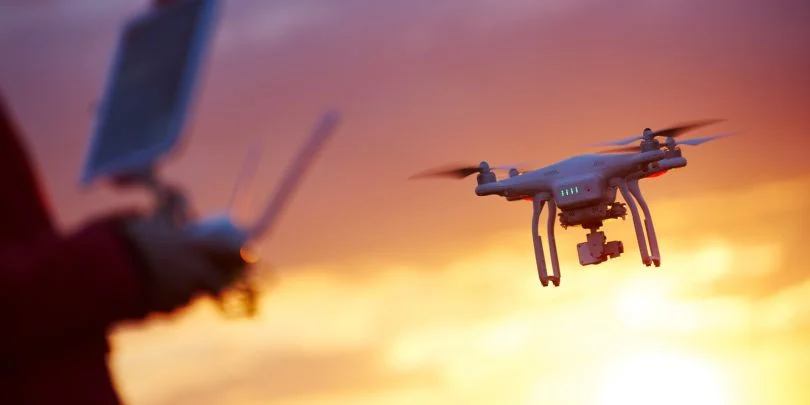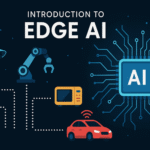Just a decade ago, drones technolgy were mostly seen as futuristic toys or military equipment. Today, they have become an integral part of multiple industries, with their influence growing at a rapid pace. From delivering groceries to monitoring security, drones are transforming how businesses operate and how people interact with technology. Their rise marks a new era in convenience, efficiency, and innovation.

The Evolution of Drone Technology
Initially, drones (also known as UAVs – Unmanned Aerial Vehicles) were primarily used for military surveillance and operations. Over time, advancements in AI, GPS, computer vision, and lightweight materials allowed drones to become accessible for commercial and personal use.
Now, drones are not only filming breathtaking videos for creators but are also being used by companies like Amazon, UPS, and DHL to deliver packages, by farmers for precision agriculture, and by governments for emergency response.
Drones in Deliveries
One of the most exciting areas where drones are making a massive impact is logistics and deliveries.
- Faster and More Efficient Deliveries
Drones can bypass road traffic and fly directly to their destination. This makes deliveries much faster, especially in congested urban areas. For example, Amazon Prime Air has tested drone deliveries that promise packages within 30 minutes of purchase. - Reaching Remote Areas
Drones can reach places where traditional delivery methods struggle-mountainous regions, islands, or rural villages. Companies like Zipline are already using drones to deliver medical supplies, blood, and vaccines to remote areas in Africa and beyond. - Eco-Friendly Alternative
Since drones are electrically powered, they can reduce the carbon footprint of delivery services compared to traditional trucks and vans. This makes drone delivery a greener, more sustainable solution for the future. - Emergency Use
In critical situations, drones can deliver urgent supplies like medicines, defibrillators, or rescue kits much faster than traditional methods. This could mean the difference between life and death in emergencies.
Drones in Surveillance
Apart from deliveries, drones technology are revolutionizing security and surveillance across industries.
- Public Safety and Law Enforcement
Police departments in several countries now use drones for crowd monitoring, search-and-rescue missions, and crime scene investigations. Drones can access dangerous locations without risking human lives. - Border Security
Governments use drones to monitor borders, track illegal crossings, and detect smuggling operations. Their ability to cover large areas makes them highly effective in maintaining security. - Industrial and Corporate Surveillance
Factories, construction sites, and warehouses often employ drones to monitor operations, ensure worker safety, and detect equipment malfunctions early. - Home Security
Companies are even experimenting with drone-based home security systems where drones patrol a property automatically and send live footage to the owner’s phone.
The Benefits of Drone Technology
- Cost-Effective: Reduces labor costs in delivery and security operations.
- Efficiency: Saves time by cutting travel routes and covering large areas quickly.
- Accessibility: Reaches remote, dangerous, or disaster-hit locations.
- Data Collection: Equipped with cameras and sensors, drones can gather vast amounts of data in real-time.
Challenges and Concerns with Drone Technology
As drones become mainstream, they also raise serious challenges:
- Privacy Issues
Surveillance drones can intrude on personal privacy, sparking debates over misuse. - Safety Risks
Accidents like mid-air collisions, crashes in crowded areas, or technical failures pose risks. - Regulations
Governments worldwide are still working on building clear regulations for drone usage. Airspace management, licensing, and permissions remain complicated. - Security Threats
Drones can be misused for spying or illegal deliveries, raising national security concerns.
The Future of Drone Technology
The coming years will see drones becoming smarter, safer, and more capable:
- AI-Powered Drones: Advanced AI will allow drones to avoid obstacles, identify people, and optimize flight paths automatically.
- Drone Delivery Networks: Large-scale drone networks could act as “flying postal services” in cities.
- Medical and Humanitarian Uses: Drones will play a critical role in disaster response, humanitarian aid, and life-saving deliveries.
- Integration with Smart Cities: Drones could work with IoT and smart city infrastructure to monitor traffic, pollution, and urban safety.
Conclusion
Drone technology is no longer just a futuristic dream-it is shaping the world we live in right now. From delivering packages within minutes to monitoring borders and saving lives in emergencies, drones are revolutionizing industries. While challenges like privacy, safety, and regulation must be carefully managed, the potential benefits far outweigh the risks.
As technology advances, drones will become as common as delivery vans or CCTV cameras. In a future not too far away, seeing drones buzzing above cities-delivering food, medicines, or keeping neighborhoods safe-will be just another part of daily life.
The transformation is already underway, and drones are proving to be one of the most impactful technologies of our time. Also Check Rise of Biohacking – Merging Tech with the Human Body 2025.



1 thought on “Drone Technology – OG Ultimate Guide – 2025”